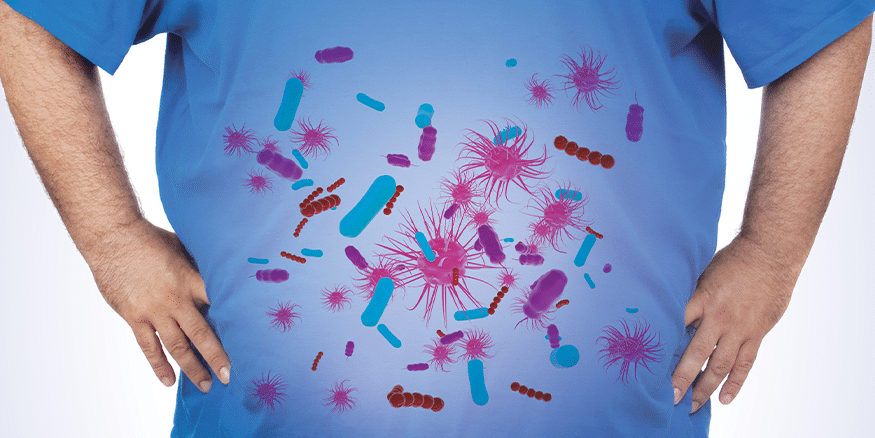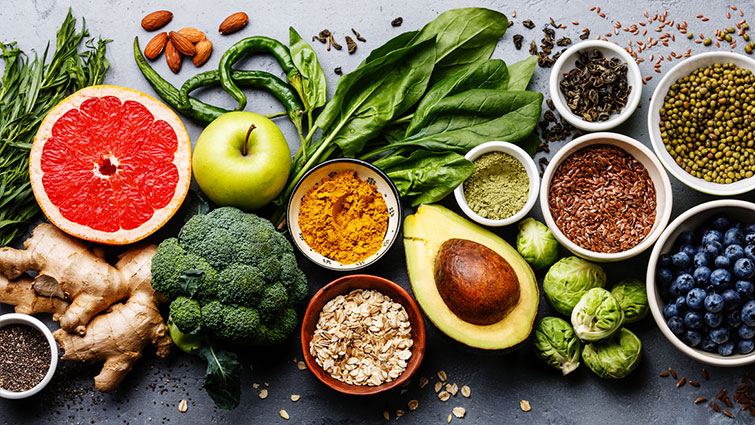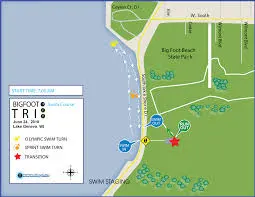Seaweed has long been considered a food staple in Asian cultures and there are many types of seaweed, all of which fall under the general category of “sea vegetables” or more precisely “algae”. Anyone who enjoys Japanese cuisine has experienced nori and wakame which are two very common types found in sushi rolls and miso soup, respectively. I have to admit that until I worked at an integrative cancer center, I had never given sea vegetables or their nutrient content much thought. Seaweed snacks are gaining popularity in Western culture so let’s take a look at how they stack up on nutrients, health benefits, and taste.
These edible algae are categorized as green, red, or brown and there are literally hundreds of different species. Interestingly, most of the algae we consume is brown or red and not actually of the green variety. Each type of algae has a unique array of nutrients ranging from Vitamin C and A, protein, calcium, and more. One surprising fact is that most species of seaweed are considered highly invasive, which has promoted the creation of several alternative uses such as emulsifiers (carrageenan), thickeners, artificial sweeteners (mannitol), and flavor enhancers (dulse) to replace the less healthy monosodium glutamate. Sea vegetable consumption is said to have a multitude of health benefits such as prevention of cardiovascular disease (CVD), regulation of blood sugar levels and cholesterol levels, intestinal health, weight loss, anti-inflammatory, anti-oxidant and anti-cancer value, among others. (1)
The green type of alga is more common in Hawaii and is sometimes referred to as “green caviar”. It is scraped from rocks in shallow pools, has an earthy taste akin to oysters when eaten raw, and is often added to salads. These green algae are rich in chlorophyll, Vitamin C, and glucuronic acid and are said to be great for collagen production in the body/skin.(1)
Nori and wakame are made from red algae, which are also the main source for carrageenan, the common emulsifier found in U.S. food products like almond milk. Nori is popular due to its high protein, mineral, and vitamin content and is the most highly valued of all cultivated seaweed bringing in approximately $1,200 per wet ton (see picture below).(1) Per 100g of dry weight, nori contains between 32 and 47g (32%-47%) of protein with seventeen different amino acids. That same 100 grams of nori boasts ten different minerals with high concentrations of potassium (1,602mg), magnesium (233mg), phosphorus (720mg) , and calcium (359mg) . Trace amounts of many vitamins can be found in nori, but Vitamin A and B12 are most prominent. Wakame nutrients are twice those in nori but the sodium content is also five times higher.(2)
Brown alga is better known as Kombu, and it is considered “The King of Seaweed” because of its versatility. It is the only seaweed that is used to make a “stock” or broth and is used as a base in various Asian soups or dishes. It can be added as an additional ingredient when making dry sheets of common nori or wakame or it can be used on its own as a wrap, noodle, or flavor sprinkles. A 100g serving of Kombu contains 27g of fiber, 510mg of magnesium, 710mg of calcium, 610g of potassium, and 3.9mg of iron.(3)
One would assume that since seaweed contains all of these great nutrients it must provide some health benefits.
Asian cultures experience lower rates of all cancers, CVD, and other chronic diseases such as diabetes and dozens of studies have proven that dietary patterns, including seaweed consumption, has something to do with it.(4,5,6,7) However, as we all know, there is a big difference between correlation and causation. Historically, Asian cultures also consume far fewer processed foods, so this must also be taken into consideration along with their high fish and soy consumption. Testing for the direct association between seaweed consumption and its health benefits has been mostly limited to petri dishes or animal studies and research is lacking in human studies. Much of the current evidence is referred to as “growing” or “emerging”.(8) Additionally, there are considerable differences in various types of seaweeds and the nutrients they contain, as well as the concentrations and bioavailability of these nutrients after processing that must be evaluated.(2,8) Some seaweeds provide minimal nutrients after being dried and processed.(3) In general, there are good indications that seaweed provides benefits but further research needs to be done. Also be aware that all seaweed products contain higher than average amounts of sodium, sulfates, and heavy metals, which can be problematic for some people.(6)
Finally, let’s take a look at the snacks. Just like the “veggie chip” craze, if it seems too good to be true…..it usually is. When reviewing three different types of seaweed snacks (Annie Chun’s Roasted Seaweed Snacks, SeaSnax Crispy Seaweed Strips, and Kirkland Brand Organic Seaweed Snacks), I was unable to determine what kind of seaweed was used to make any of them. The ingredients simply say “seaweed”. Unfortunately, due to the large amount of species and nutrient differences between species, listing “seaweed” doesn’t give us enough information. Also, the snacks contain a variety of additives that may diminish the quality of the products such as tapioca starch, glutinous rice flour, isomalto-oligosaccharides, corn oil, canola oil, maltodextrin, and brown sugar. After tasting the products, I would say they are only just okay. All of them have a fishy aftertaste and were pretty unsatisfying. Real vegetables are a much better snack option and until these products are proven to provide real benefits, I think I’ll take a pass. Honestly, I don’t think I would comfortably suggest these as an alternative to someone who, for example, is addicted to potato chips, because I am pretty sure they might gag a little!
References
1.Jaspars M, Folmer F. Sea Vegetables for Health. Food Heal Innov Serv. 2013;(February). http://www.foodhealthinnovation.com/media/6694/sea_vegetables_february_2013.pdf.
2.Taboada MC, Millán R, Miguez MI. Nutritional value of the marine algae wakame (Undaria pinnatifida) and nori (Porphyra purpurea) as food supplements. J Appl Phycol. 2013;25:1271-1276. doi:10.1007/s10811-012-9951-9.
3.The Encyclopedia of Seaweed. The Kurakon Website. http://www.kurakonusa.com/seaweed/index.html. Accessed October 18, 2015
4.Yamori Y, Liu L, Mizushima S, Ikeda K, Nara Y. Male cardiovascular mortality and dietary markers in 25 population samples of 16 countries. J Hypertens. 2006;24(October 2015):1499-1505. doi:10.1097/01.hjh.0000239284.12691.2e.
5.Shimazu T, Kuriyama S, Hozawa A, et al. Dietary patterns and cardiovascular disease mortality in Japan: a prospective cohort study. Int J Epidemiol . 2007;36 (3 ):600-609. doi:10.1093/ije/dym005 .
6.Bocanegra A, Bastida S, Benedi J, Rodenas S, Sanchez-Muniz FJ. Characteristics and nutritional and cardiovascular-health properties of seaweeds. J Med Food. 2009;12:236+. http://go.galegroup.com.ezproxy.emich.edu/ps/i.do?id=GALE%7CA201370834&v=2.1&u=lom_emichu&it=r&p=AONE&sw=w&asid=11646a5461c84e89ebdcb1d574b5570c.
7.Yamori Y, Miura A, Taira K. Implications from and for food cultures for cardiovascular diseases: Japanese food, particularly Okinawan diets. Asia Pac J Clin Nutr. 2001;10(January):144-145. doi:10.1111/j.1440-6047.2001.00227.x.
8.Brown EM, Allsopp PJ, Magee PJ, et al. Seaweed and human health. Nutr Rev. 2014;72(3):205-216. doi:10.1111/nure.12091. </small>




